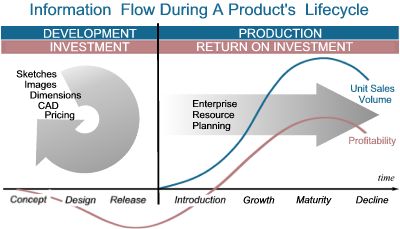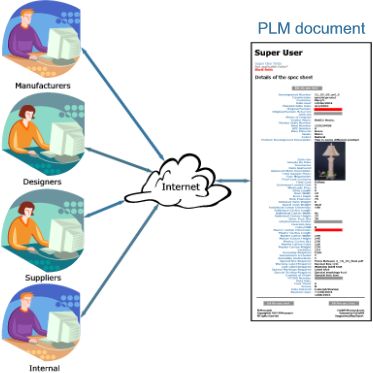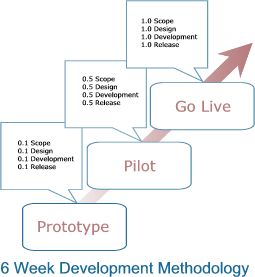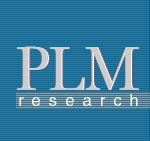|
“Product
Lifecycle Management (PLM): A 25% reduction in time-to-market, greater
management visibility, and $100,000's in opportinity cost and annual savings.... no
wonder companies like Global Views, Inc.® and The Uttermost
Company® are
turning to PLMresearch's Product Lifecycle Management services
to automate their product development efforts”. (download
this document in pdf)
In the world of furniture accessories - wall décor, mirrors,
lighting, tabletop art, etc. - new product is the lifeblood of
a company's existence. "Our retailers need fresh and new accessories
to keep their stores and associated furniture interesting",
explains Mac Cooper, President of The Uttermost Company. “However,
if it takes nine months t o deliver those designs to market, much
of the opportunity is lost due to the accessory market's increasingly
shorter product lifecycles”. Furthermore, many in the accessories
world rely upon an outsourced manufacturing model - often on a
global basis - to provide more value and product diversity to their
consumers, adding yet another layer of complexity to their efforts.
And therein lies the rub: o deliver those designs to market, much
of the opportunity is lost due to the accessory market's increasingly
shorter product lifecycles”. Furthermore, many in the accessories
world rely upon an outsourced manufacturing model - often on a
global basis - to provide more value and product diversity to their
consumers, adding yet another layer of complexity to their efforts.
And therein lies the rub:
“ How do midsize manufacturers maintain
their creative edge, leverage a globally distributed value chain
and
still deliver hundreds
of new SKU's to market promptly?”
Product development typically involves a number of designers,
suppliers, manufacturers and internal personnel all engaged in
a cycle of
iterative sketches, reviews, samples and revisions until the
design(s) are "just right". But let's face it; getting the design
right is only part of the challenge. When the dust settles; when
the design reviews are complete, and the sample is "tossed
over the wall" into production, all of the "qualitative" design
vocabulary needs to be translated into a set of "quantitative" product
attributes - various dimensions, CAD drawings, photographs, vendor
numbers, etc. - in order for production plans/delivery to be met.
Managing and sharing this information (it’s not uncommon
for each SKU to have 100+ product attributes) falls under the
heading of Product Lifecycle Management and is directly related
to the
speed at which new product can be brought to market.

Managing Development
According to consulting firm Pittiglio Rabin Todd & McGrath approximately
80% of a product’s cost structure is determined during the
Development phase of its lifecycle. Paradoxically, however, this
is one area that management has had little visibility or control
- and distributing product development around the globe exacerbates
an already challenging situation.
Why is Development so difficult to manage? Unlike Production information
that concerns itself with internally generated accounting, planning,
and procurement information, Development information often originates
outside the walls of the enterprise. CAD drawings, samples, images
and sketches emanate from a cadre of outsourced design, manufacturing,
sourcing and logistics services. These "external" stakeholders
participate heavily during Development, and the exchange of development
information becomes intense. Unfortunately, this interaction has
historically flown under the radar scan of Enterprises Resource Planning
(ERP) systems.
Product Lifecycle Management (PLM)
defined
When Product Development
was conducted in-house, sharing product information (collaboration)
was relatively simple. Today, product
conception, design reviews, sourcing, launch strategy and manufacturing
rarely occur in the same location… or time zone… or
country. Global competition, favorable overseas manufacturing opportunities,
and the overwhelming success of outsourcing as a business model
has stretched Development across borders, cultures and value chain
partners.
PLM promotes value chain collaboration by providing a centralized
document repository – “the same sheet music” – from
which Development information can be shared; commissioned designers
can upload sketches, CAD and concepts; Agents can respond with
prototype images, dimensions and weights; Vendors can offer component
suggestions and design alternatives; Internal personnel can review
material lists to ensure long lead time items are in process; Logistics
can assign customs numbers; Quality Assurance can ensure labeling,
hazardous materials, and assembly instruction are uploaded and
attached to the  design; Development comments and price negotiations
can be recorded to ensure “a paper trail of accountability” follow
the product from conception through to delivery. In short, the
velocity of information between Development stakeholders increases,
resulting in accelerated time-to-market and tremendous cost savings. design; Development comments and price negotiations
can be recorded to ensure “a paper trail of accountability” follow
the product from conception through to delivery. In short, the
velocity of information between Development stakeholders increases,
resulting in accelerated time-to-market and tremendous cost savings.
PLMresearch's Product Lifecycle Management services
PLMresearch’s Product Lifecycle Management system offers a secure Internet
venue where product attributes can be uploaded/entered, viewed, and edited providing
a centralized, “collaborative” repository of product Development
information. Each participant (stakeholder) can interact only within their level
of authorization:
- Designers can upload sketches, CAD and concepts;
- Agents can respond with prototype images, dimensions and weights;
- Vendors can offer component suggestions and design alternatives;
- Internal personnel can review material lists to ensure
long lead time items are
in process;
- Logistics can assign customs numbers;
- Quality Assurance can ensure labeling, hazardous materials, and assembly
instruction
are uploaded and attached to the design, and
-
Design comments and price negotiations can be recorded to ensure “a paper
trail of accountability”.
 Unlike traditional mass-produced, “shrink wrap” software that requires
your existing business processes and procedures to be modified to fit the software’s
needs, PLMresearch’s Product Lifecycle Management services
are tailored to perfectly match your existing Development processes. Unlike traditional mass-produced, “shrink wrap” software that requires
your existing business processes and procedures to be modified to fit the software’s
needs, PLMresearch’s Product Lifecycle Management services
are tailored to perfectly match your existing Development processes.
While traditional project methodologies assume system developers,
users and business owners are able to have a clear and detailed
understanding of the
kind of system
they need well into the future, PLMresearch’s approach recognizes that
the business environment and user requirements are constantly changing and the
users’ understanding of what they need evolves with the
system use. PLMresearch’s
Rapid Development Methodology (RDM) framework fosters success through rapid prototyping
and client feedback utilizing an iterative three phase delivery over a six week
period – Prototype, Pilot and Go Live - each containing four development
themes – Scope, Design, Develop, and Release. Pleas click here
for a full explanation of our methodology or here to request an online demonstration of our Product
Lifecycle Management service or here to contact us directly.
|
